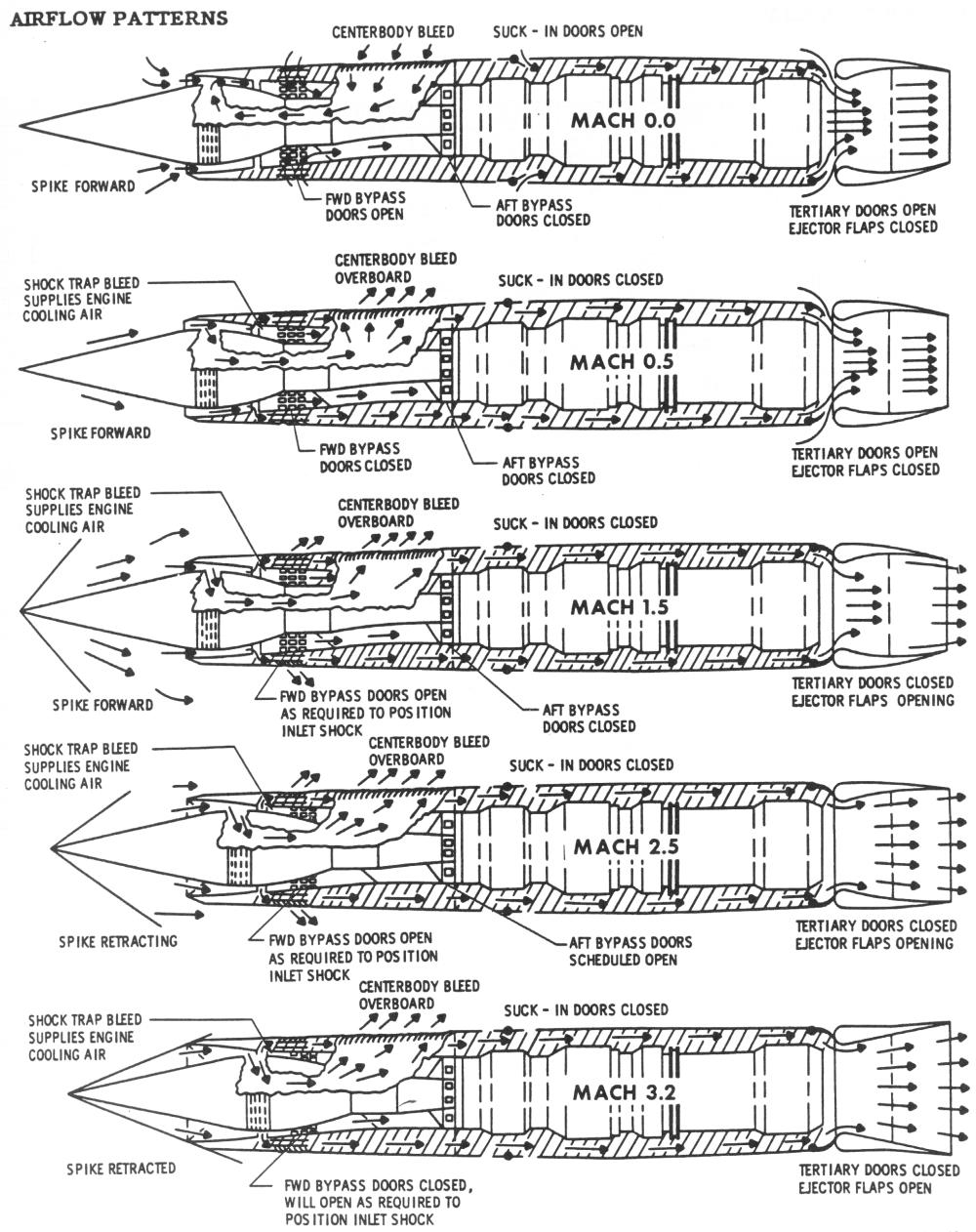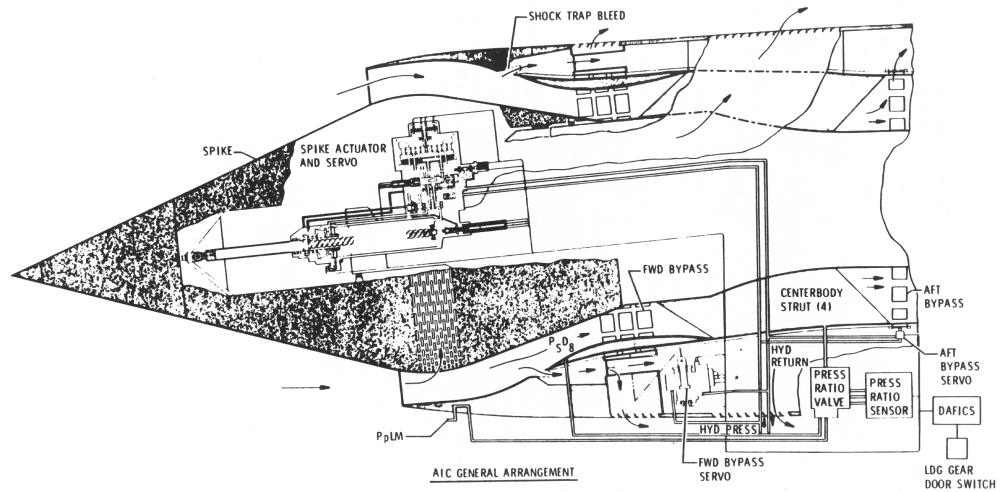 |
enginehistory.org
Aircraft Engine Historical Society Members' Bulletin Board
|
| View previous topic :: View next topic |
| Author |
Message |
jrussell
Joined: 26 May 2004
Posts: 55
Location: Portland, Oregon
|
 Posted: Fri Nov 19, 2004 02:40 Post subject: J58 operating modes Posted: Fri Nov 19, 2004 02:40 Post subject: J58 operating modes |
 |
|
| Can anyone refer me to a good technical source of information on the P&W J58 ? I am specifically trying to understand how the shock traps, bypass bleeds and ejectors worked. This is one of those looong projects, that where the more you learn, the less you think you know. I work as a volunteer docent at the Evergreen Aviation Museum, and we have a SR-71 ( #971) that I get to look at real close every weekend - this is far more complex than I had originally anticipated. I have been told by apparently reliable sources that the aircraft nacelles are considered part of the powerplant, rather than the airframe, as far as who would maintain them. I tried NASM and they came back with no joy (very fast - I was surprised! ). As part of my research I have discovered that the nacelles and engines on a A-12 are NOT the same as a SR-71, contrary to common belief ( the engines are definitely of the same family, but the engine at Seattle does not have movable segments on the stators). The Seattle Museum of Flight has the remaining M-21, and I went up there and looked it over real close, and found quite a few differences. |
|
| Back to top |
|
 |
kmccutcheon

Joined: 13 Jul 2003
Posts: 299
Location: Huntsville, Alabama USA
|
 Posted: Sun Nov 21, 2004 09:41 Post subject: Posted: Sun Nov 21, 2004 09:41 Post subject: |
 |
|
| Quote: | | Can anyone refer me to a good technical source of information on the P&W J58 ?... |
The information you seek is on the inlet and ejector, both of which are airframe as opposed to engine elements. While it is true that powerplant specialists maintain the entire powerplant subsystem, including the J58, inlet, ejector, and associated subsystems, the design of the inlets and ejectors, plus the integration of the J58 were all done by Lockheed.
The best source of information I have found is the presentations from the AEHS 2012 Convention.
Another good source is the SR-71 Pilot’s Manual. This is available in the public domain, but Motobooks published a copy of it in 1992. It describes in great detail the functioning of the powerplant systems and how, at cruise, the engines only account for a little over 17% of the total thrust! Please see diagrams below
One thing I find missing in many Internet articles about the A-12/SR-71 is any discussion of the thermal impacts of sustained higher-than-Mach-3.2 flight. The A-12/SR-71 family of aircraft was fuel cooled. The pilots and systems were protected from aerodynamic heat by air conditioning system that moved the heat to the fuel which was subsequently burned, taking the heat away with it. Any consideration of sustained high speed operation was a trade-off between performance and fuel volume available to absorb enough heat to protect the pilots and systems.
| Quote: | | As part of my research I have discovered that the nacelles and engines on a A-12 are NOT the same as a SR-71, contrary to common belief ( the engines are definitely of the same family, but the engine at Seattle does not have movable segments on the stators). The Seattle Museum of Flight has the remaining M-21, and I went up there and looked it over real close, and found quite a few differences. |
It is my understanding that every single airplane was hand-built and therefore unique. Also, the A-12 was in service at a time when the powerplant systems (including the configuration of the ducts) were still evolving. For example, the A-12 used analog inlet control systems, which were not nearly as good as the later digital ones, leading to numerous inlet unstarts and myriad stories of former A-12 pilots. Unstarts also happened in the SR-71, but from what I have been able to glean, were not nearly as common as in the A-12.
You are correct that achieving an understand of this complex aircraft and its incredible degree of integration will be a long project. I have been at it for more than 15 years and still learn new things all the time. Hope this helps in some small way.

 [/img] [/img]
_________________
Kimble D. McCutcheon |
|
| Back to top |
|
 |
gravery

Joined: 15 Oct 2004
Posts: 13
Location: Le Chesnay, France
|
|
| Back to top |
|
 |
jrussell
Joined: 26 May 2004
Posts: 55
Location: Portland, Oregon
|
 Posted: Wed Nov 24, 2004 22:19 Post subject: Posted: Wed Nov 24, 2004 22:19 Post subject: |
 |
|
| Thank You very much guys! I have been trying ( very slowly) trying to translate the aerostories page. The english page is good, but it seems the french page is the one I need to understand. The funny thing about this one is that it seems that having the hardware to look at actually makes it more difficult to understand. I guess the complexity is more evident. As far as I have been able to ascertain, ( in a brief conversation with one SR-71 pilot) top speed was determined by the limiting parameter of C.I.T of 427 degrees centigrade, although it is notable that in the pilots manual all the charts seem to end at mach 3.3. However, if conditions were right, and you had a SAM chasing you, you might be tempted to find out just how far beyond the chart the hardware would go! |
|
| Back to top |
|
 |
|
|
You cannot post new topics in this forum
You cannot reply to topics in this forum
You cannot edit your posts in this forum
You cannot delete your posts in this forum
You cannot vote in polls in this forum
|
Powered by phpBB © 2001, 2005 phpBB Group
|




 [/img]
[/img]